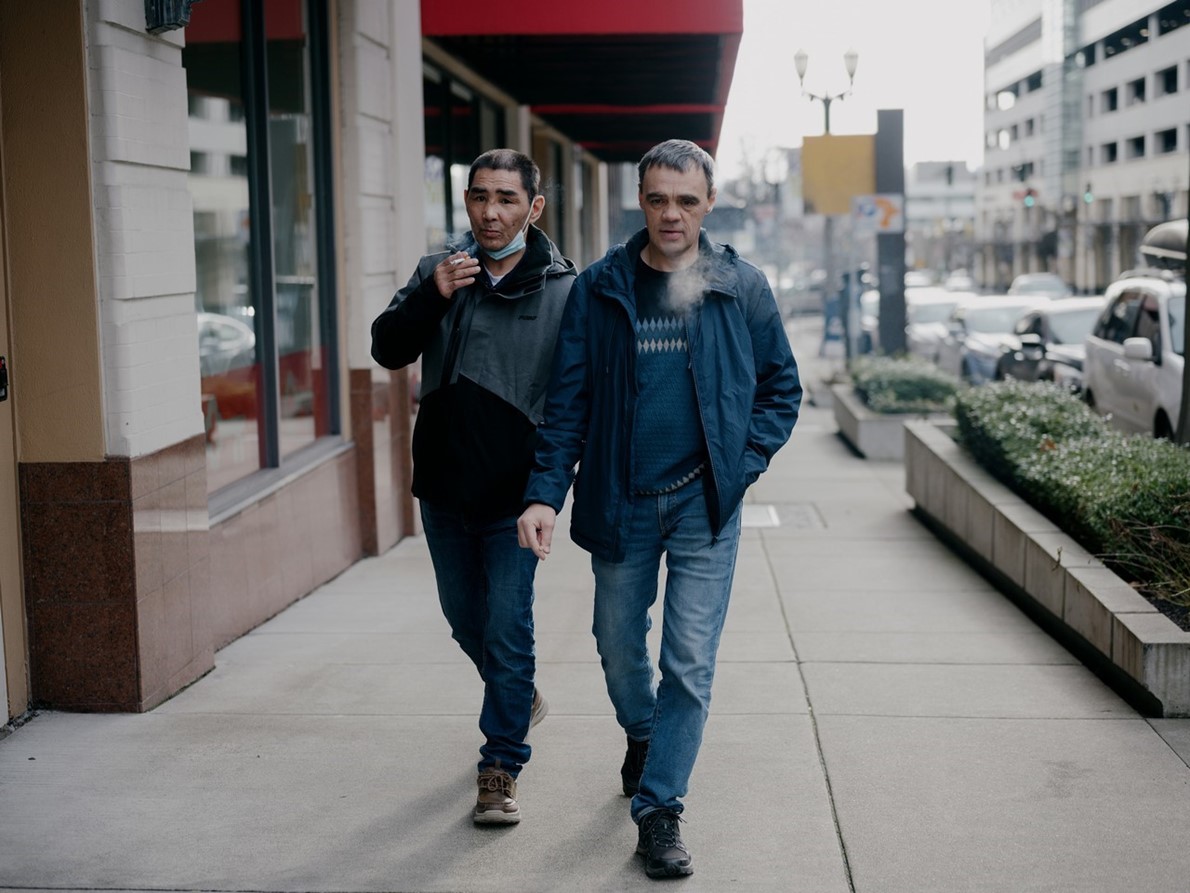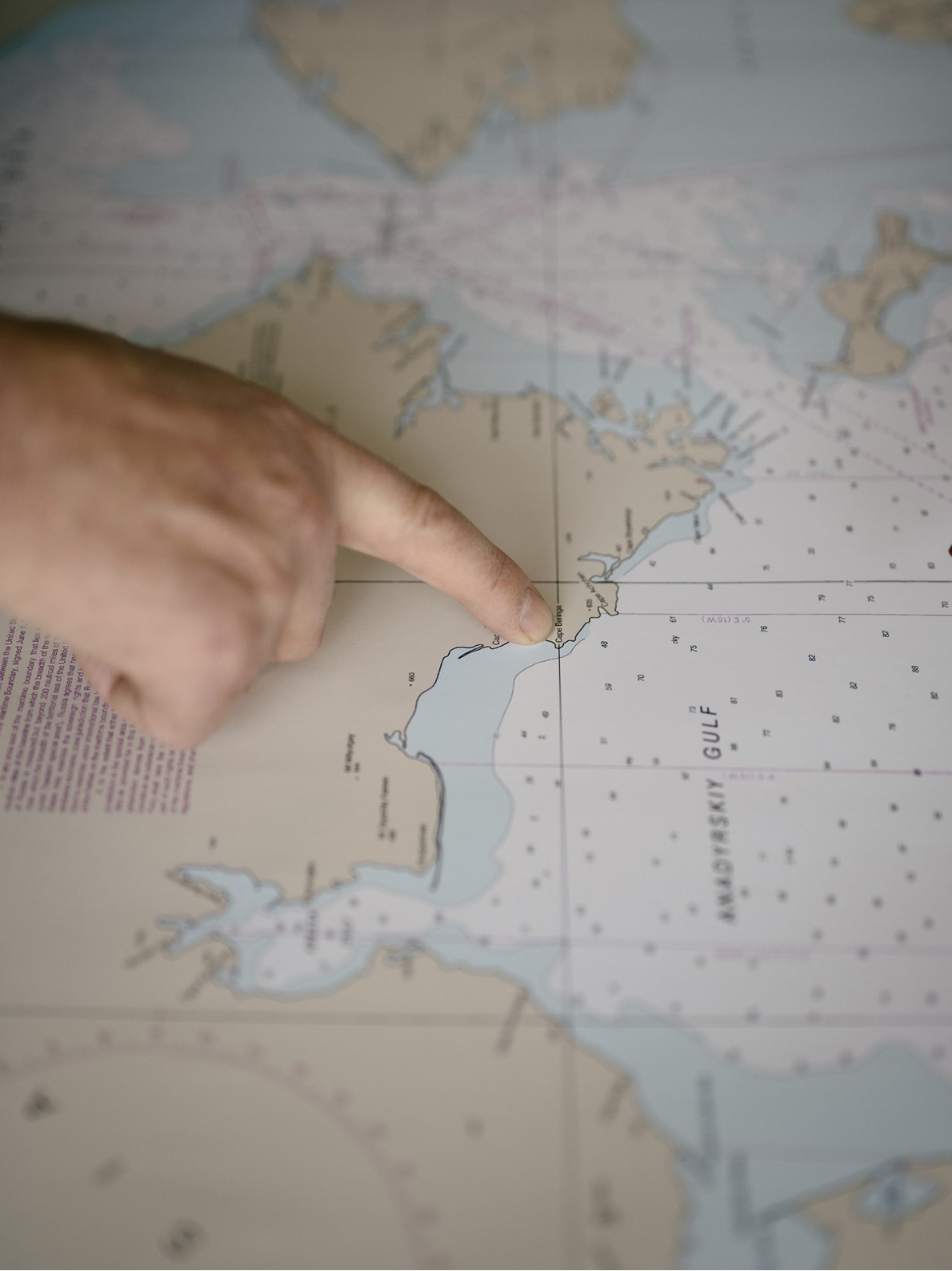A series of knocks rattled his
apartment door one day last fall, and Maksim peered through the peephole to see
two soldiers in uniform. They were military enlistment officers, he knew,
expanding the vast conscription effort for the war in Ukraine to Russia’s
remote Far East.
اضافة اعلان
The 44-year-old fisherman kept in
motionless silence until the officers moved along. Knowing they would be back,
Maksim went that night to the home of a friend, Sergei, who had received an
unwelcome visit of his own. Together, they pored over maps at Sergei’s kitchen
table, trying to find a way to flee the country and a war where thousands of
young Russian men were dying. Sergei then offered a plan that, at first, seemed
unfathomable.
“I propose that we travel by sea,” Sergei
said.
The idea was the start of a daring and
daunting journey in which the two men set off in a small fishing boat with a
60-horsepower motor to travel hundreds of miles over several days — past
Russian border guards and through the treacherous Bering Sea — to win asylum on
US shores. It was a desperate quest for freedom, and one that did not go
according to plan.
For months, thousands of Russian men with
similar misgivings have been fleeing the country, driving across the border,
taking trains into Europe, or securing flights overseas. Some of those escaping
military service traveled by plane to Latin America, then northward, with more
than 35,000 Russians arriving last year to seek asylum at US borders.
Some of those escaping military service traveled by plane to Latin America, then northward, with more than 35,000 Russians arriving last year to seek asylum at US borders.
Maksim and Sergei, who asked that their
last names not be published to protect their families, did not have the money
or luxury for such a journey, nor did they have much support. In the town of
Egvekinot, wedged between the mountains and the Bering Sea on the edge of the
Arctic Circle, it seemed most everyone was a supporter of Russian President
Vladimir Putin, even as the prolonged war in Ukraine had called more local men
into service for a conflict thousands of miles away.
With the aid of VPNs that allowed them to
bypass internet censorship and find news beyond the nationalist propaganda
coming out of Moscow, Sergei and Maksim had grown to reject the Kremlin’s
narrative about the war. They would not willingly join what they saw as an
unjustified invasion, launched by a government they so vehemently opposed.
But Maksim was not so sure they could
survive a trip from Egvekinot to the Alaska mainland. Then, as they examined
maps further, they noticed St. Lawrence Island, part of Alaska, right in the
middle of the Bering Sea. The journey to get there would not be nearly as far.
On their phones, satellite images showed that the island was home to a village
and an airstrip.
 Maksim
(left) and Sergey, two Russian citizens who are seeking asylum after a five-day
boat journey across the Bering Sea, walk in downtown Tacoma, Washington, on
January 19, 2023.
Maksim
(left) and Sergey, two Russian citizens who are seeking asylum after a five-day
boat journey across the Bering Sea, walk in downtown Tacoma, Washington, on
January 19, 2023.
“We can do that,” Maksim agreed.
He had a boat, about 5m long, the kind of
vessel best suited for fishing in the tame waters of Kresta Bay. This journey
would take them far beyond that — some 480km across Russian coastline, then
deeper into turbulent seas. It was their best option, they decided, so long as
the fall weather, often frigid so far north, stayed calm — and so long as the
Russian border patrol did not spot them.
The risks were clear. There was a possibility
they might not survive. But to them, it was a chance worth taking.
A ‘fishing’ tripThe men had little time to spare.
With the sun sitting ever lower on the
horizon, temperatures were steadily dropping and would soon be well below
freezing, too cold for them to survive a crossing by sea. They were already
eyeing storms that could capsize their boat. And the military enlistment teams
were still roaming through town.
By the end of the day one Monday last
September, the men had a plan to depart by the end of the week, as soon as the
weather offered a window of calm. They pooled their money to purchase several
hundred liters of fuel, filling orange drums that pushed the boat’s dark-green
hull deeper into the water.
They gathered clothes and camping gear,
coffee, and cigarettes. They packed water, chicken, eggs, sausage, bread, and
potatoes. They charged their GPS unit and phones to help navigate the route.
Maksim’s parents and siblings — Indigenous
Chukchi — were vacationing away from home when he and Sergei decided to leave,
and hoping to keep their escape a secret, he opted not to share his plans with
them.
Sergei, 51, would be leaving behind friends
and a transportation business. Elsewhere in Russia were his mother and two
daughters.
The men were anxious, but then they got a
jolt of optimism after seeing a video on the Telegram messaging platform. At a
news conference that week, a reporter had asked the press secretary at the
White House about the US policy for handling people who fled Russia.
Sometimes it would feel as if they were in a ditch, with water rising up on both sides of them. When going up swells, the boat’s motor would buzz, strained to the edge of its capacity.
“Anyone seeking refuge for persecution,
regardless of their nationality, may apply for asylum in the United States and
have their claim adjudicated on a case-by-case basis,” the spokesperson, Karine
Jean-Pierre, responded.
By Thursday, with only wisps of clouds in
the sky, the men gathered at the pebbled shoreline. They told friends they were
going “fishing”, then pushed off into the water, unsure whether they would ever
be back, and also unsure whether they would find a new home.
Boat troubles and border guardsThe first leg of the route was a familiar
one, just a couple hours across the bay to Konergino, where Maksim was born and
where they could stay with some of his friends.
After spending the night and refueling
themselves and the boat, they departed again in the morning, following the
coast eastward for more than 160km. With the seas tranquil, they pressed on,
but their progress was hampered by the boat, which kept stalling every couple
of hours, forcing them to troubleshoot the motor and adjust fuel lines, sowing
worry about how the vessel would hold up for the remainder of the trip.
They arrived at the community of Enmelen by
5pm, renting rooms from locals. But they faced a new problem: A storm system
had arrived, with winds whipping down the treeless hillsides and foaming the
seas below. When they awoke the next morning, it was still too rough. So was
the next day.
 Maksim, a Russian citizen seeking asylum in
the US, talks about his escape from Russia in a homeland security detention
center in Tacoma, Washington, on December 22, 2022.
Maksim, a Russian citizen seeking asylum in
the US, talks about his escape from Russia in a homeland security detention
center in Tacoma, Washington, on December 22, 2022.
But the storm finally passed, and the men
set out once again, trailing the squalls to the east. The disturbed seas were
much choppier than they had been, with crashing waves spraying over Sergei’s
side of the boat. The small windshield did little to protect them from the
elements.
Before long, water filled the base of the
boat, the bilge pump grinding in a constant whir as it tried to keep up.
They were also wary about the towns ahead,
on the eastern edge of the Chukchi Peninsula, where many Russian border guards
were stationed. The men had turned their cellphones to airplane mode, hoping
not to be tracked. They kept their satellite phone off. As they approached
areas with more population, they veered into deeper waters, hoping that staying
2km offshore would be enough.
They argued about the best strategy: Maksim
wanted to take an even wider berth to avoid detection. Sergei, already drenched
and less confident, tried to stop him. He wanted to stay in calmer waters.
With the sun setting, they began searching
for a place out of the elements where they could pull up their boat. They found
a cove, dropped anchor, and tied up to a boulder on shore. There, they
discovered an abandoned shack, its paint peeled and boards decaying. They set
up a tent inside.
Into the Bering SeaThe following morning, Maksim awoke early,
trekking up a hillside with a pair of binoculars to look for border patrol
activity and gauge whether the weather was clear enough to proceed to the most
difficult part of the voyage: crossing the Bering Sea.
He worked his way back down to their
campsite to report. “The sea is calm,” he said.
They cooked up some chicken, made tea, and
then set off, using their GPS unit to point them toward St. Lawrence Island.
As they accelerated away from the Russian
coast, Maksim kept scanning behind them, looking for helicopters or patrol
boats. His boat surely did not have the speed to outrun them.
They had about 80km to go, passing by
walruses and watching as an orca followed them for part of the crossing. Then
the waves started to rise again, tossing the boat through swells, as if they
were riding a motorcycle through the mountains.
Sometimes it would feel as if they were in
a ditch, with water rising up on both sides of them. When going up swells, the
boat’s motor would buzz, strained to the edge of its capacity. Wave crests
broke over the hull, dousing them.
Then, at the peak of one of the swells,
Sergei stood up and shouted: “The island!”
“Where?” called Maksim. He could not see
long distances as well.
“You’re heading right toward it,” Sergei
replied.
Someone told them it was “a shame” that the border had ever been created; people would go back and forth across the sea all the time “before they made these maps”.
The island was bathed in the orange glow of
twilight. A group of villagers on all-terrain vehicles had spotted them and was
zipping out to the shore.
Maksim turned to Sergei: “They’re not going
to shoot us, are they?”
An elusive freedomMaksim put the boat into full throttle as
he approached the shore, then cut the engine as they sloshed up onto US soil
for the first time.
As the men climbed out of the boat, they
opened up translation apps on their phones, typing out a message for those
coming to greet them: “We don’t want the war. We want political asylum.”
Word soon spread through the community of
Gambell, Alaska, home to about 600 people, nearly all Alaska Natives. As some
used a tractor to pull the boat above the tide line, others brought the men to
the local police station. Food began to arrive from all over town: pizza,
sausages, peanut butter, soup, tea.
 Sergey,
a Russian citizen seeking asylum in the US, shows where he and his friend,
Maksim, traveled on their five-day journey across the Bering Sea.
Sergey,
a Russian citizen seeking asylum in the US, shows where he and his friend,
Maksim, traveled on their five-day journey across the Bering Sea.
The men told the growing crowd about their
journey and their desire for freedom, and people there spoke of the
generational connections of Indigenous communities that cover the Bering Sea,
including the Chukchi people like Maksim. One person in Gambell reported having
a grandfather born on the Russian side. Many had other relatives.
Someone told them it was “a shame” that the
border had ever been created; people would go back and forth across the sea all
the time “before they made these maps”.
But the next day, the world of borders
returned. US immigration officers arrived from the mainland, and flew Sergei
and Maksim off to what would be three months in an immigration detention facility
in Tacoma, Washington.
It was only this month that the two men
were released, and they began contacting family and friends to let them know:
They were alive. They had fled Russia. They were safe in the US — for now.
They have started sharing their story,
speaking to the New York Times through an interpreter. Interviews in Alaska and
Washington state, along with GPS-stamped photos, corroborate much of their
account.
Like most of the Russians who have begun
arriving at America’s doors, they have received no firm assurances that they
can stay. Asylum petitions can take a year or more to process. Winning them
means being able to prove the threat they faced in Russia — something their
lawyers in the US feel confident enough about.
While waiting, they have tried to sort out
what a new life in the US might mean. They signed up for English classes, and
Sergei put out feelers on a new business venture. Maksim has started talking
about going back to Alaska to retrieve the boat he left there, the one that
saved them.
Read more Lifestyle
Jordan News






